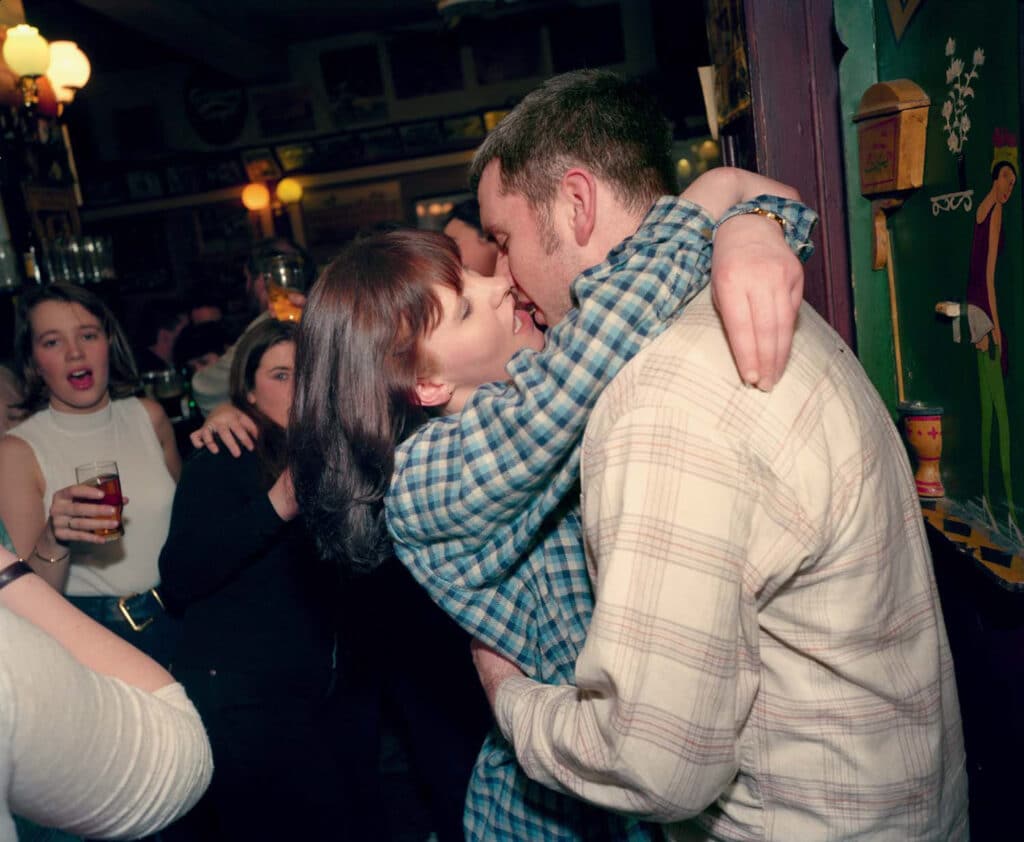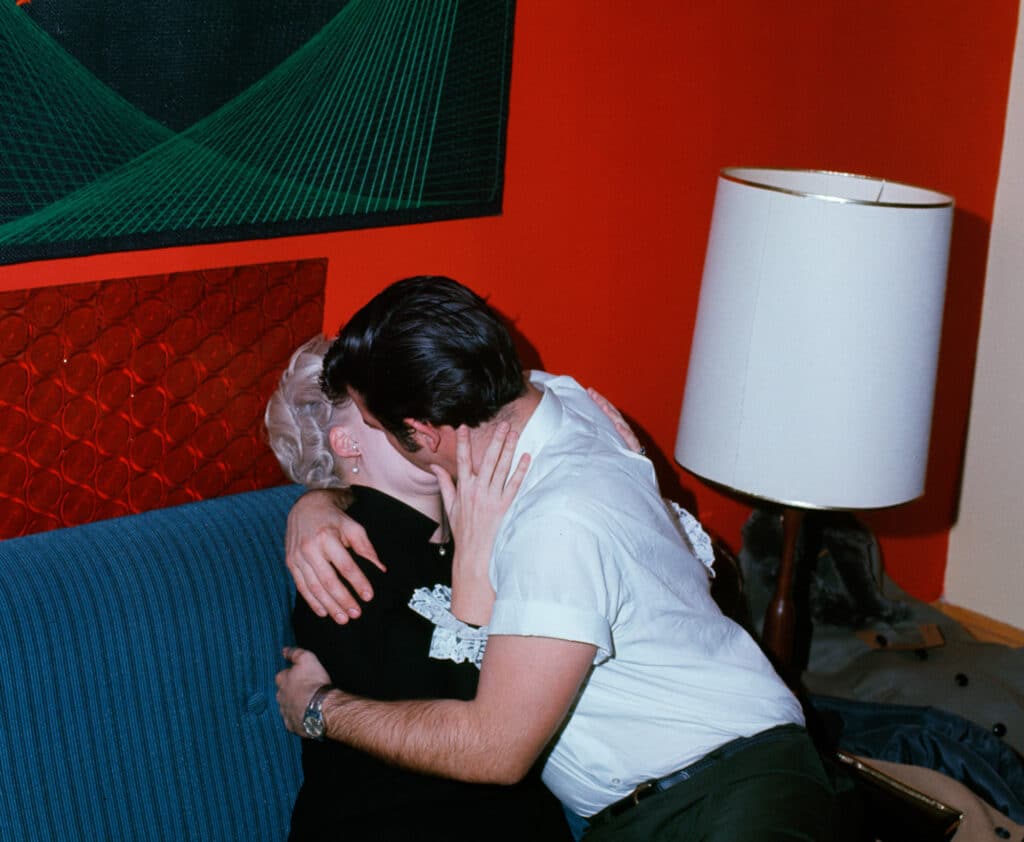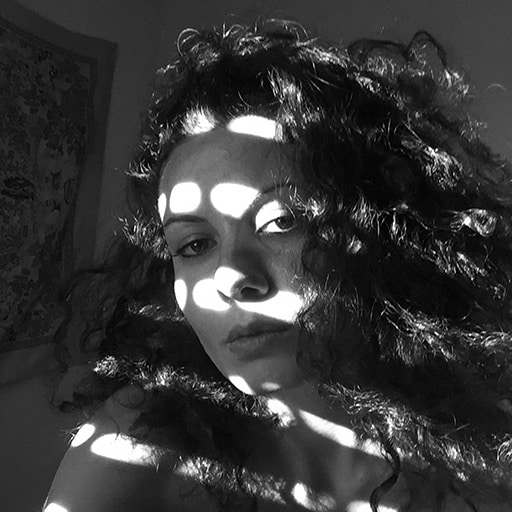Cortona is a Mediaeval city perched on the Tuscan hills, the kind of Italian town where no flat road or straight corner has ever been seen. Thick with layers of history, since 2011 it has hosted Cortona on the Move, a photography festival that subverts the old town’s quiet routine every summer, flooding it with an international crowd and turning the vibe a touch wilder.
This year’s turning point saw curators Antonio Carloni and Arianna Rinaldo, who had shaped the festival’s identity and guided it since its birth, hand over the reins of the festival to director Veronica Nicolardi and artistic director Paolo Woods. The new duo called the current edition “Me, Myself and Eye”, putting the emphasis on photography as a form of mutual communication and foregrounding the photographer’s point of view.
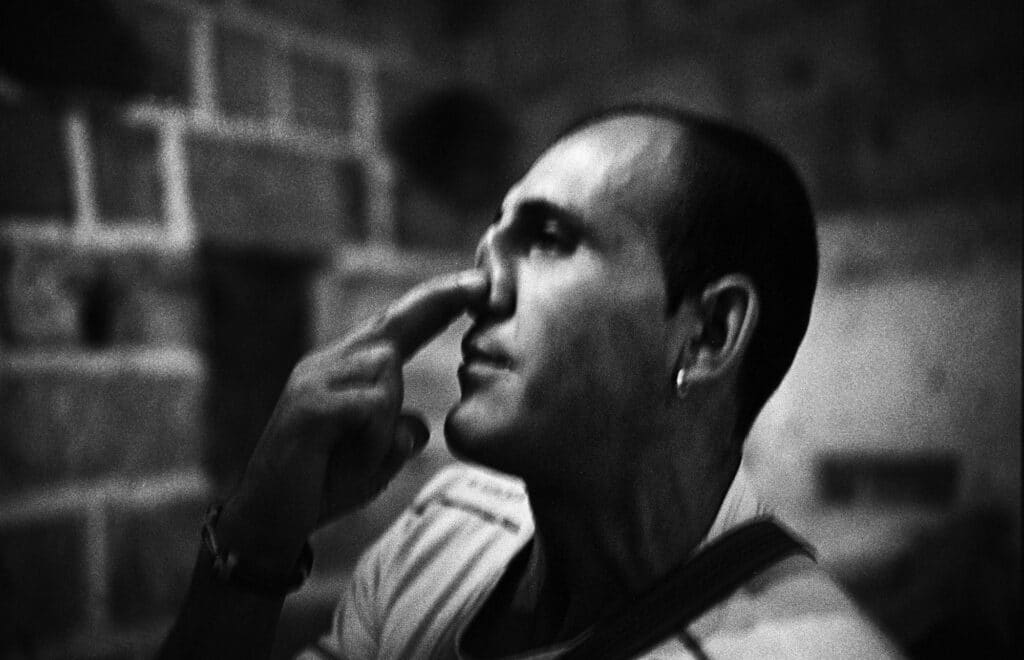
As a photographer, Paolo Woods has the ability to create conceptual work that is far from austere or minimal, but is rather engaging at first sight and able to speak to a wide audience. This line of thought can be traced in many of this year’s curatorial choices. “Photography must do something to us”, he says. “It triggers a ping pong effect: you see the work, it hits you, it provokes questions. You go read the text, then you come back with a second layer of awareness, and you engage with it in a different way. But the first level is important. Something needs to get in, to click inside.”
Palazzo Baldelli – one of the main exhibition venues and a vertical labyrinth at the heart of the old center – is filled with just this kind of ping pong challenge, starting with three series focused on ID photos. Alexandr Chekmenev’s post-USSR passport photographs from Ukraine are dark and revealing. In 1994 all Ukrainian citizens had one year to substitute their Soviet passports with Ukrainian ones. At the time Chekmenev received an underpaid offer to photograph old or sick people in Luhansk who couldn’t go to an office to get their photos taken. After seeing the conditions of the first lady he had to photograph, he went on for free. He carried two cameras, one for the passport photograph and one with a wider lens that allowed him to photograph the scene around the white background held by family members and social workers. His photographs reveal what the Soviet propaganda had left behind, and all that was left out of the frames of photo IDs at the moment they were taken.
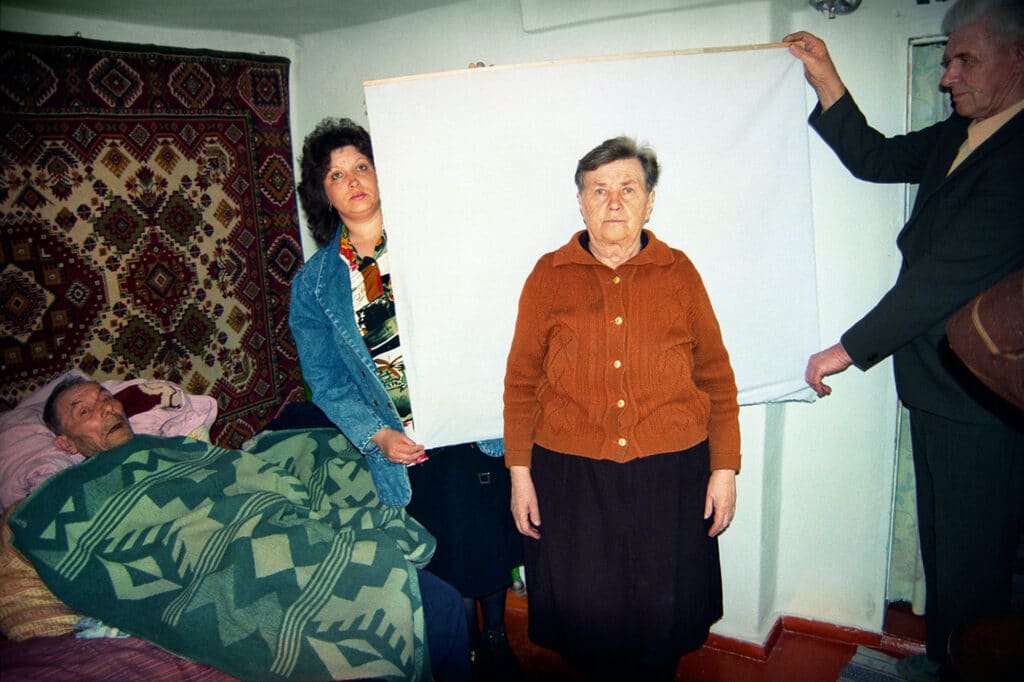
The series of Martina Bacigalupo and Alessandro Cinque, created respectively in Uganda and Peru, also reflect on photo IDs, and explore the circumstances of production in which these photographs reveal layers of socioeconomic dynamics at play. “In Martina’s case”, says Paolo Woods, “the missing part of the frame is glued to a document used by people today in Uganda to open a bank account or be recognized at a checkpoint, the other part is exhibited in Cortona. This for me is extraordinary”.
As a visitor, one can continue to climb up the stairs and witness an encounter between two seminal photographic archives of respectively 50.000 and 800.000 images, the first by photographer Martin Parr, the latter collected by Lee Shulman in The Anonymous Project. Following a line of diptychs, one can find in each of them disconcerting similarities between, on the one hand, a frame by Martin Parr–one of the best known living photographers of the day–and on the other a snapshot by an anonymous amateur.
Without a doubt a courageous statement by Martin Parr, the desecrating exhibition undermines importance of authoriality, ridiculing the worship of “sacred masters” of photography. It also reminds us that the way in which we choose to frame particular moments draws from a collective visual vocabulary and is rarely unique, never original.
What occasion, then, is more photographically sacred than a marriage? And what is more profane than the intrusion of wedding photography at a photo festival? Curators followed a single main rule in the next exhibition, which displays scenes from weddings in different corners of the world: the photos themselves had to be commissioned by the bride and groom. Ranging from Saudi Arabia to China, from Valerie Baeriswyl in Haiti to Juan de la Cruz Megías in the south of Spain, these photographs of rehearsed yet unpredictable moments are truthful beyond what the participants could imagine, revealing fragments of culture largely invisible to the ones who are part of it. “Sometimes they make me feel like a priest, or a judge dealing with photographic evidence” writes Juan de la Cruz, who photographed more than 2500 weddings since 1979. “ In answer to the usual questions I get asked, I promise that I do not go the day before to hang things on the walls. There is no need.”
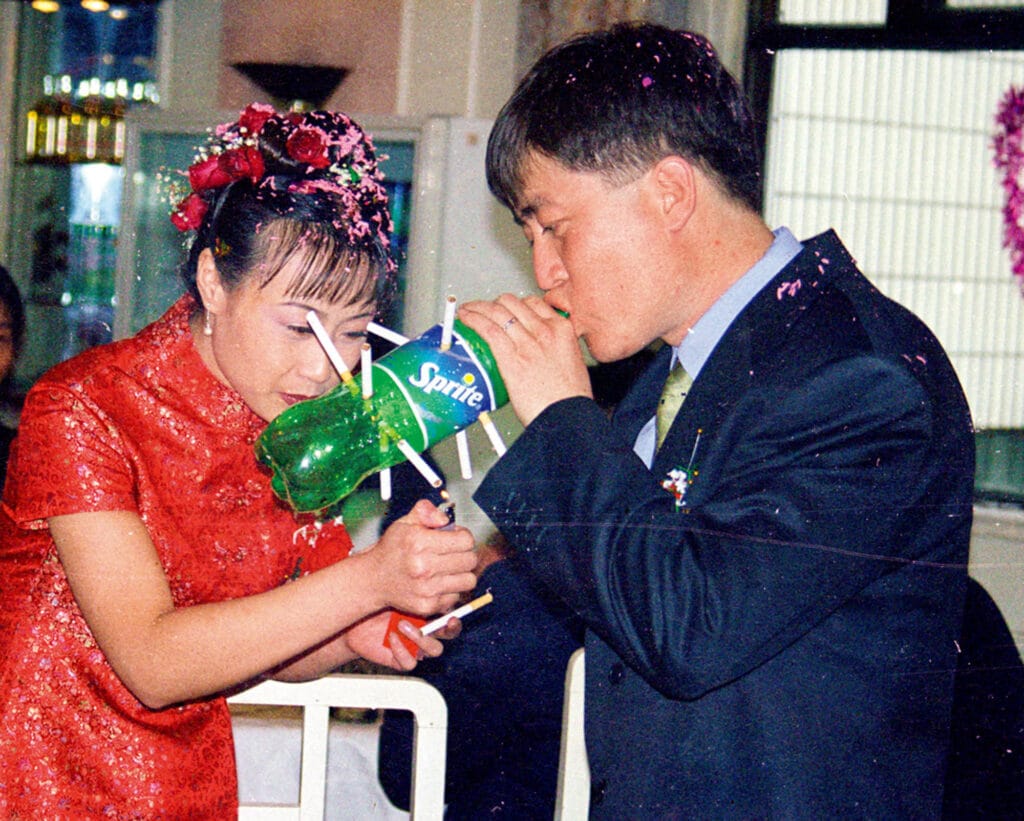
Close by, in a former butcher shop warehouse, Christian Lutz’s exhibition “Citizens” confronts speechless visitors with the far-right identitarian movements and populist parties currently rising all over Europe, in a poetic and haunting body of work that, in contrast to the usual dedicated news coverage, unveils the phenomenon’s nuances, its capillarity and therefore the difficulties in framing and fighting it.
To recover from the darkness, one can follow Lucas Foglia’s photographs from San Marco’s church all the way up to the Girifalco fortress. A work in progress, Foglia’s series evocatively chronicles the yearly migration of Painted Lady butterflies from South Africa across the Mediterranean basin towards northern Europe. Both physical and metaphorical, the journey includes photographs of people he meets along the way, some of them migrants themselves. Encountering the photographs one by one while climbing up in the heat feels like a pilgrimage: the viewer’s own fatigue recalls the journeys depicted in the photographs.
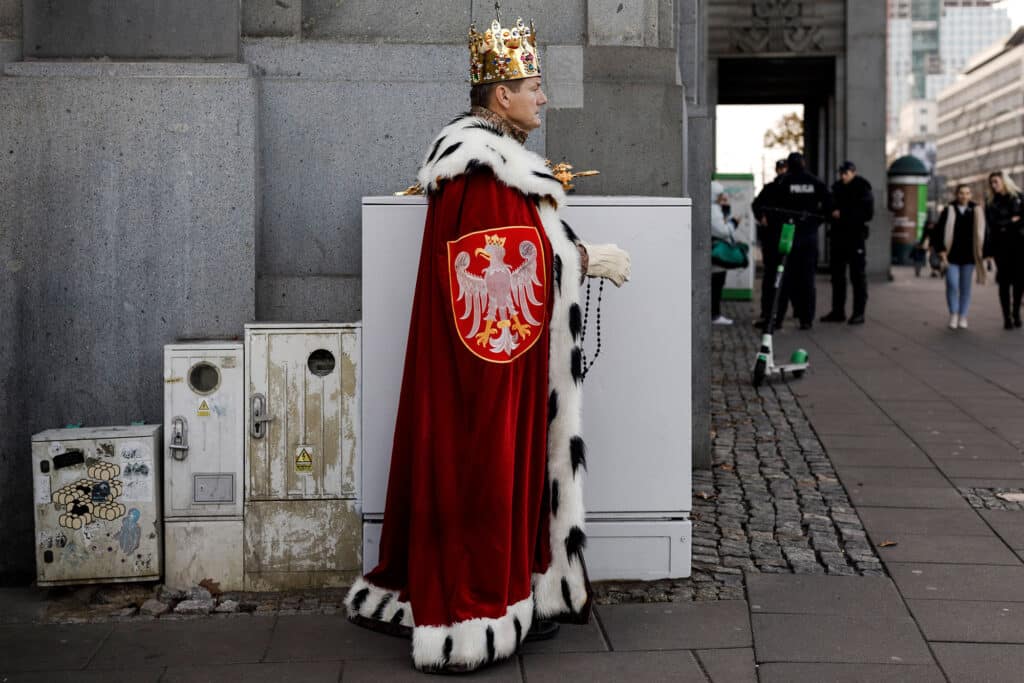
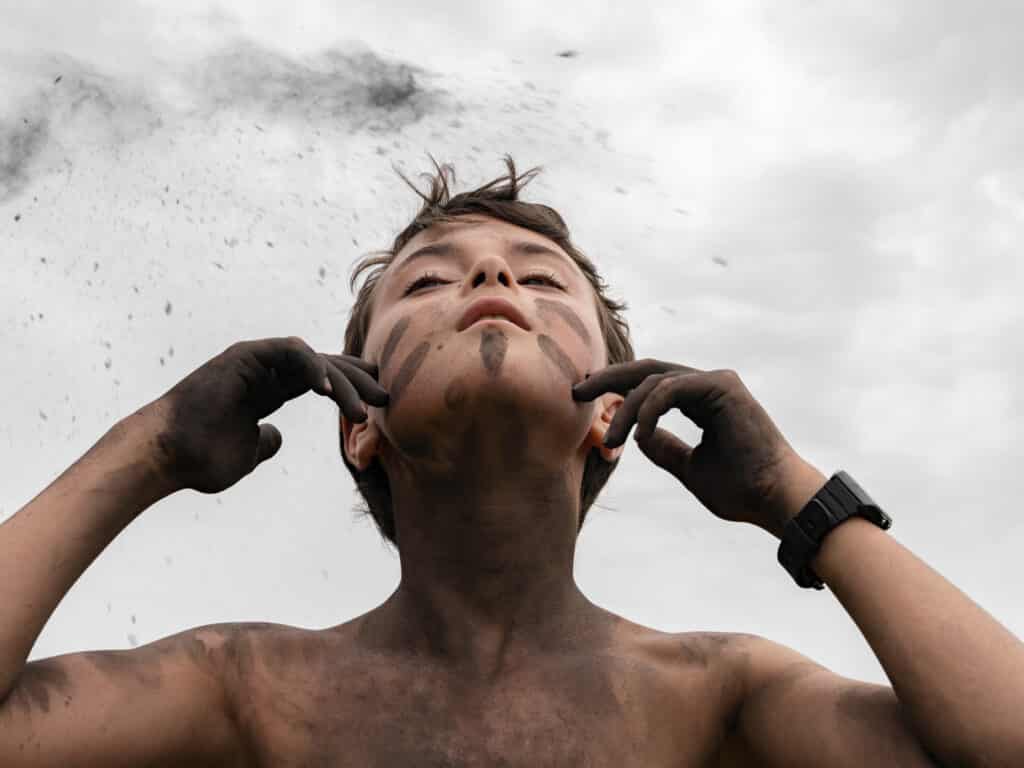
At the end of the Via Crucis, yes, the fortress is equipped with a bar. Among the exhibitions at this spectacular hilltop venue, which overlooks the surrounding fields, an outstanding one is by Stacy Kranitz, Kentucky-born photographer who devoted her career to photographing in Appalachia, the poorest region in the United States. Far from the exploitative glance that many have turned to this region over the years, she sees no boundaries between herself and the raw, rowdy circumstances that populate her images. Almost as a statement of this kind of vision, an underground space with a dirt floor houses her self-portraits, exhibited as large lightboxes. Since no tripod and timer could fit her gut-driven style, these frames, in which she often interacts with others, were shot by friends operating under her direction but also, as she remarks, through their own creativity.
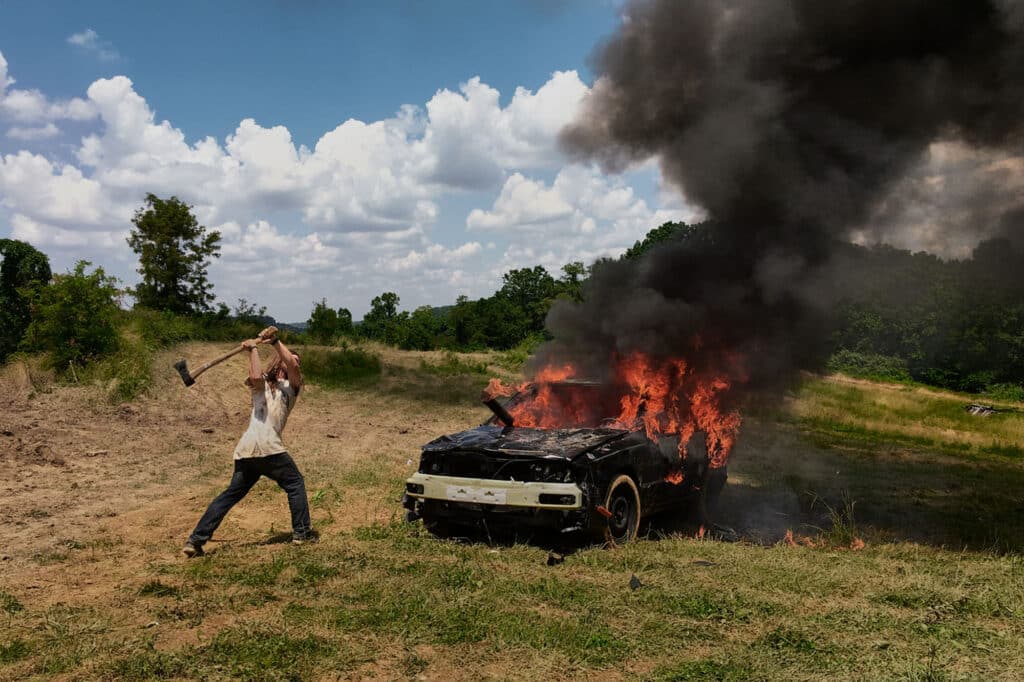
This way of working from the belly of a community, with no judgement and no discretion, is mirrored by Jacob Holdt’s immense oeuvre, the big, bold introduction that this edition gifted to the Italian and international public, currently exhibited at the station of Camucia. A Danish working on racism in the US in the 1970s, Holdt was sincerely blind to the ordinary rules of documentary photography–whether those of today or yesterday, and because of that he was able to do such candid, troubling, unprecedented and unmatched work.
At the end of a few days in Cortona, the thread running throughout the festival, its exhibitions and recurring atmosphere becomes apparent: Cortona on the Move is very little about photographers and much about the questions behind photography itself, the shapes it can take and the ways it can be used.
Cortona on the Move is on view in the city of Cortona, Italy, until October 2.
Cover photo by Jacob Holdt

